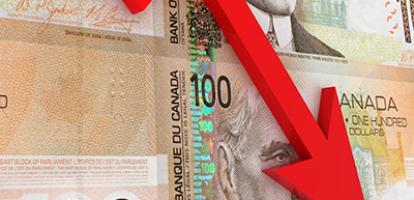Published in The National Post on February 11, 2015
By: William Robson
William Robson is president and chief executive officer of the C.D. Howe Institute.
Canadians have had some time to adjust to the Bank of Canada’s surprise cut in its policy interest rate to 0.75% on Jan. 21. With the Bank’s next interest-rate announcement coming on March 4, now seems a good time to take stock of what the January cut in the overnight rate target meant, and what the Bank of Canada might, and should, do next.
January’s cut shocked financial markets. After more than four years with the policy rate at 1.00%, most of us expected its next move to be upward. The Canadian dollar closed down a cent and a half on the day. Analysts put the Bank’s accompanying Monetary Policy Report under their microscopes. Noting, for example, that the economic commentary was more upbeat than the rate cut implied, some revived the notion that Governor Steve Poloz likes a low dollar. Others criticized the Bank’s language about risks and insurance, underlining the potential spur of lower borrowing costs to credit-crazy consumers.
Looking through the complexity of modern central bank communications, though, the January interest rate cut may best be seen as getting back to basics. The Bank of Canada targets inflation. Inflation targets are an admirable goal for monetary policy – in fact, if the Fed had used one, the bubble and crisis of the 2000s might never have happened.
Moreover, the Bank has done a better-than-decent job at hitting its target. For the past 19 years, the target has been 2.0% year-over-year increases in the consumer price index. Over that period, the CPI’s rise has been within one percentage point of the target most of the time, and its average annual increase was 1.9% – not bad, considering the tumult of the past six years.
Why was the Bank’s pursuit of its goal so successful? Mainly because the goal was paramount: The key consideration in setting monetary policy has been whether Bank staff think inflation will come in above, at, or below 2%.
Which is what the January cut was all about. Critics of the Bank’s January Monetary Policy Report could usefully point out that its inflation forecast first appeared on page 15. It should have been on page 1, or even the front cover. That forecast showed that, largely because of lower oil prices, the Bank expects CPI inflation to drop to just 0.3% this spring, and only get back to 2.0% by the end of 2016. Since keeping inflation expectations anchored at 2.0% is important in realizing the benefits of the target, the case for easing to get inflation back to target in a timely way is strong. The Bank could have underlined that point by showing its forecast for inflation without the rate cut, and with it.
Looking forward, the message from the January cut and the Bank’s commentary is clear: The Bank’s goal is inflation. It does not target the exchange rate. If it had been trying to hold the dollar down by keeping interest rates too low, or prop it up during slumps by keeping them too high, the CPI would not have risen around 2.0% so reliably over the past two decades.
Neither does the Bank target mortgage lending or consumer debt. Those things matter, but the Bank has only one tool – its policy interest rate – and cannot use it for more than one purpose. If Canadians are overextending themselves on housing, other governments – local governments with their controls on land use, and the federal government with its mortgage-insurance programs – should step in.
What about the dissonance between the Bank’s upbeat commentary on the economy and the gloomy inferences – some called it “panic” – of the rate cut? To the extent oil prices are down because of weakening demand and a slowing world economy, a rate cut is in order. To the extent they reflect ample supply, the world’s productive capacity benefits, and all central banks, including the Bank of Canada, can meet their inflation objectives with lower interest rates than would otherwise have been necessary. Either way, it’s all about inflation.
The January surprise was a sharp but salutary reminder that the Bank of Canada’s mandate is to deliver 2.0% CPI increases. Whether inflation looks likely to run above or below that mark is the surest indicator of what the Bank should do with the overnight rate. And if what the Bank should do is what it actually does, that should be no surprise.




